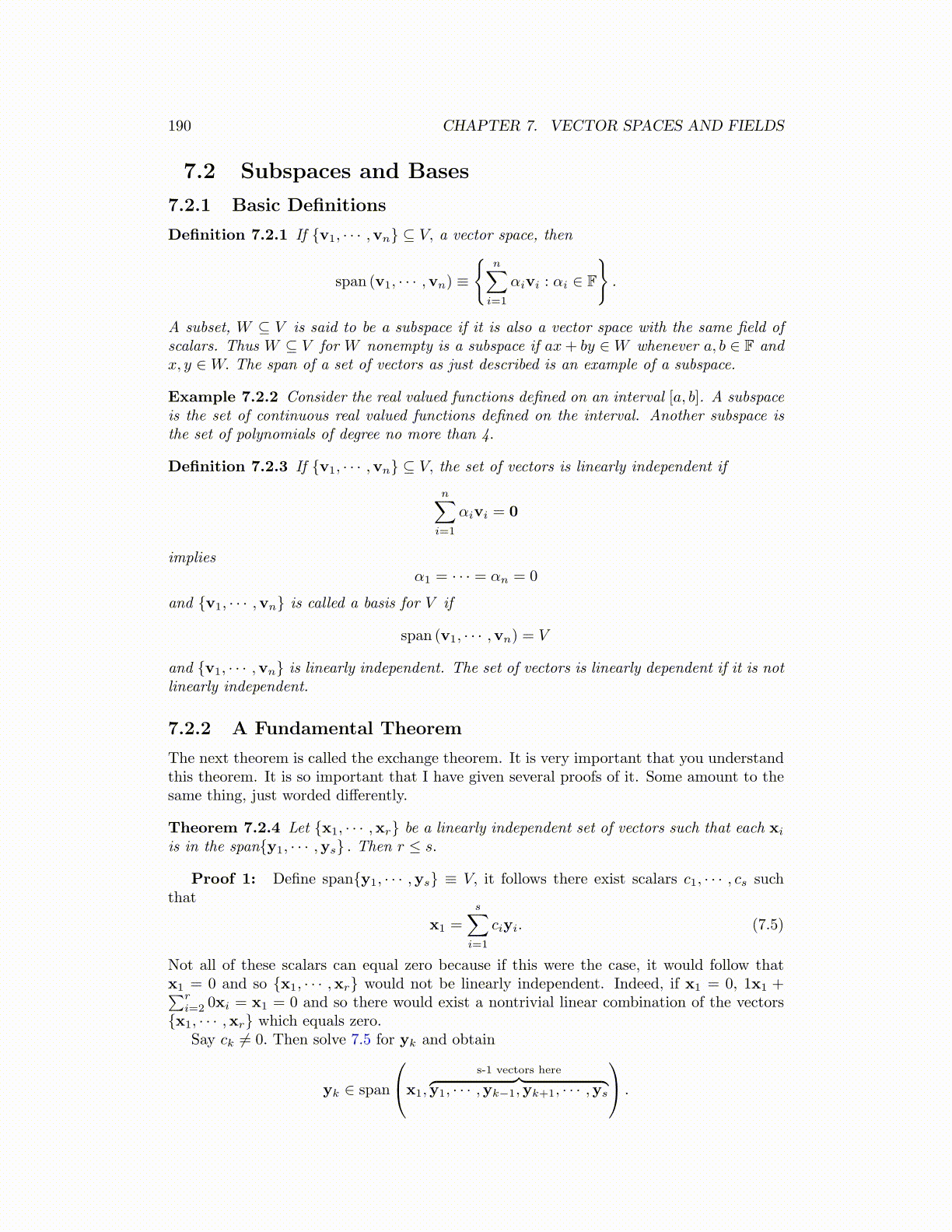
190 CHAPTER 7. VECTOR SPACES AND FIELDS
7.2 Subspaces and Bases
7.2.1 Basic Definitions
Definition 7.2.1 If {v1, · · · ,vn} ⊆ V, a vector space, then
span (v1, · · · ,vn) ≡
{n∑
i=1
αivi : αi ∈ F
}.
A subset, W ⊆ V is said to be a subspace if it is also a vector space with the same field ofscalars. Thus W ⊆ V for W nonempty is a subspace if ax+ by ∈W whenever a, b ∈ F andx, y ∈W. The span of a set of vectors as just described is an example of a subspace.
Example 7.2.2 Consider the real valued functions defined on an interval [a, b]. A subspaceis the set of continuous real valued functions defined on the interval. Another subspace isthe set of polynomials of degree no more than 4.
Definition 7.2.3 If {v1, · · · ,vn} ⊆ V, the set of vectors is linearly independent if
n∑i=1
αivi = 0
impliesα1 = · · · = αn = 0
and {v1, · · · ,vn} is called a basis for V if
span (v1, · · · ,vn) = V
and {v1, · · · ,vn} is linearly independent. The set of vectors is linearly dependent if it is notlinearly independent.
7.2.2 A Fundamental Theorem
The next theorem is called the exchange theorem. It is very important that you understandthis theorem. It is so important that I have given several proofs of it. Some amount to thesame thing, just worded differently.
Theorem 7.2.4 Let {x1, · · · ,xr} be a linearly independent set of vectors such that each xi
is in the span{y1, · · · ,ys} . Then r ≤ s.
Proof 1: Define span{y1, · · · ,ys} ≡ V, it follows there exist scalars c1, · · · , cs suchthat
x1 =
s∑i=1
ciyi. (7.5)
Not all of these scalars can equal zero because if this were the case, it would follow thatx1 = 0 and so {x1, · · · ,xr} would not be linearly independent. Indeed, if x1 = 0, 1x1 +∑r
i=2 0xi = x1 = 0 and so there would exist a nontrivial linear combination of the vectors{x1, · · · ,xr} which equals zero.
Say ck ̸= 0. Then solve 7.5 for yk and obtain
yk ∈ span
x1,
s-1 vectors here︷ ︸︸ ︷y1, · · · ,yk−1,yk+1, · · · ,ys
.